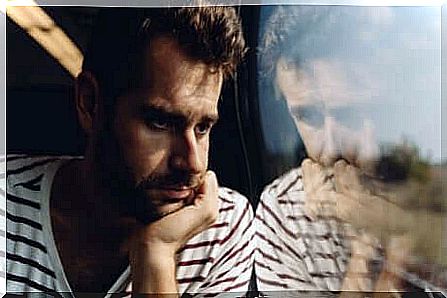Affective Ambivalence: I Want Or Have To Do

Sooner or later we all experience emotional ambivalence. We are complex beings made up of emotions, feelings and contradictions. It is therefore possible to feel joy and sadness at the same time, as well as to love and hate a person at the same time.
Have you ever loved someone while feeling a great grudge against them for how they treated you? Have you ever felt joy in seeing a family member, but also sadness for their behavior?
Affective ambivalence is part of the emotional range of the human being. In due measure it is considered an adaptive behavior, since experiencing opposite emotions helps us to make decisions and to dispel doubts, dealing with conflict situations. Yet, living in contradiction generates anguish and malaise.
What drives us to feel emotional ambivalence? What is the origin of such opposing feelings? Are we aware of the reasons that lead us to behave in this way? Does it have anything to do with the family learning patterns we have been subjected to?
These questions highlight the enormous emotional complexity of the human being, just as Daniel Goleman points out in his theory of emotional intelligence.

The concept of ambivalence
Bleuler was the first to adopt this term in 1911 to refer to the state of mind in which opposite emotions, such as love and hate, coexist.
Ambivalence is defined as a state in which different emotions come into conflict, in which thoughts and / or emotions that are naturally opposite are experienced. The perception of opposite feelings is usually perceived as unpleasant.
Where does affective ambivalence come from?
We assume that the way we feel and think is influenced by our knowledge of the world, by our way of dealing with it.
Serge Moscovici, in his theory of representations, explains that our behavior is based on a code through which we classify everything that happens to us. In other words, we give meaning to everything we experience.
Furthermore, according to the systemic current, the way in which we approach the world is strictly influenced by the family. The family system gives us information, knowingly or not, about the world and how to behave in relation to it.
Ultimately, we can say that the way we relate to emotions and thoughts is closely linked to two important factors: the family system and the beliefs we build on the basis of our knowledge of the world.
The family system, a key factor
According to Salvador Minuchin, the family is a structure based on a network of relationships within which there are other subsystems. It is to be considered a whole different from the sum of its parts, and goes through a life cycle in continuous evolution to which the system is adapting.
Each family is governed by a set of norms, rules, models, limits and hierarchies that determine its adaptation and functionality. There are three areas of interest: thinking about the world, the emotions that derive from it and the behavior we implement on the basis of the two previous points.
In other words, the education received within the family system implicitly transmits habits and beliefs to us.
The family defines who we are
Each family has normalized behaviors that are completely opposite to those of another family unit. There are, for example, families where everyone dines together at the same time and others where each member eats alone and when they prefer.
Have you ever been invited by someone and noticed different behavior patterns from yours? Another common case is when talking to friends comes up with family dynamics that would be unthinkable for you.
“I don’t know what they expect from me and what I want”
“What do I really want?”. We’ve all probably asked ourselves this question. At the same time, we may have asked ourselves what others expect of us. We learn to get an idea of the world and to make decisions. We decide, for example, who we want to be, where to live and who to love.
Things get complicated when what we want comes into conflict with pre-established ideas from the familiar patterns we grew up with. What they have always made us believe as right may not be, so we learn to detach ourselves from beliefs that we once believed ours.
On the one hand, we follow our instincts; on the other hand, those old conceptions resurface, and here we enter into contradiction.

Affective ambivalence: living in a state of constant contradiction
Contradictions immobilize us, cause us a deep emotional malaise. Feeling ambivalent alters our psychological balance and leads us to waste a lot of energy, overwhelmed as we are by feelings.
Living in constant indecision exhausts us, affecting our self-esteem and our state of mind. Life is made up of decisions and it’s easy to feel fear and stress at times. But when the malaise overwhelms us, we sink.
What do I do if I am in a state of emotional ambivalence?
- Stop. We have to listen to each other to understand what happens to us. What makes us feel this way? What situation are we in?
- Questioning the origin of the doubts. Analyzing the origin of our indecision is the first step to clarify.
- To become aware of one’s own reality, of what is best for oneself. We need to weigh what we love and what we don’t. Being aware of what happens to us is the best way to define and accept certain situations.
- Manage emotions, try to identify them. What I feel? How do I manage my feelings? A wrong management of emotions leads to an increase in ambivalence, for this reason it is necessary to identify them and channel them in the best possible way.
- Express yourself, ask for help. It is good to tell others how we feel. Communicating our worries and releasing our distress can help dispel our unknowns.
To quote Goleman, “each emotion predisposes us in a different way to action; each of them shows us a direction that, in the past, has allowed us to adequately resolve the innumerable challenges that human existence has had to face ”. For this reason, even affective ambivalence must be listened to and managed.








